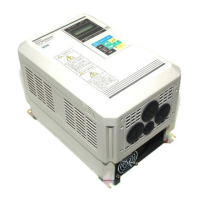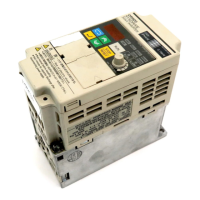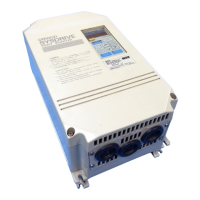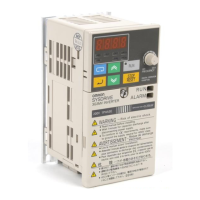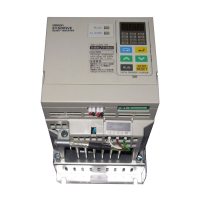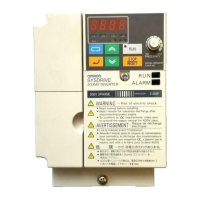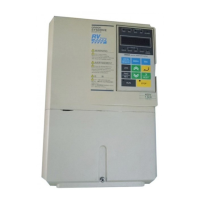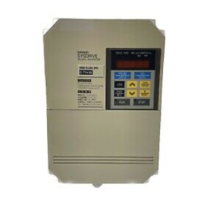!
2-37
H Connecting the Braking Resistor
• Connect the braking resistor as shown in the following diagram.
• When
using a Braking Resistor Unit, set L8-01 to “1” (i.e., overheating protection of
the braking resis
-
tor)
and set L3-04 to “0” (i.e., no decelerating stall prevention) or “2” (i.e., braking with stall prevention).
Inverter
Braking resistor
Caution The
braking resistor
’
s connection terminals are B1 and B2. Do not connect any other
terminals. Connecting any terminals other than B1 or B2 can cause the resistor to
overheat, resulting in damage to the equipment.
H Connecting the Braking Resistor Unit and Braking Unit
• Connect
the Braking Resistor Unit and Braking Unit to the Inverter as shown in the following
diagrams.
• Set
L8-01 to “0” (i.e., no overheating protection of the braking resistor) and L3-04 to “0” (i.e., no
decel
-
erating stall prevention) or “2” (i.e., braking with stall prevention) before using the Inverter with the
Braking Resistor Unit connected.
Note 1. Set
L8-01 to “1” before operating the Inverter with the braking resistor
without thermal relay
trip contacts.
Note 2. The
Braking Resistor Unit cannot be used and the deceleration time cannot be shortened by
the Inverter if L3-04 is set to “1” (i.e., decelerating stall prevention).
• To
prevent the Unit from overheating, make a power supply sequence as shown below or connect the
thermal relay trip output of the Unit to the external fault input terminal of the Inverter to interrupt the
running of the Inverter.
D 200-V Class with 0.4- to 7.5-kW Output and 400-V Class with 0.4- to 15-kW Output
Inverter
Braking Resistor Unit
Thermal relay
trip contact
Installation Chapter
2
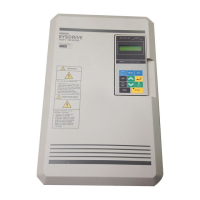
